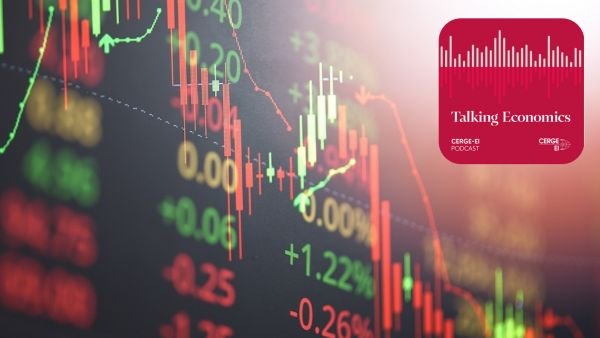By Zvikomborero Sibanda
Zimbabwe’s Treasury department presented a ZWL4.5 trillion national budget for 2023 on the 24th of November themed: Accelerating Economic Transformation. This budget projects a positive national output growth rate of 3.8% on condition that the nation receives good rainfall patterns, stable electricity supply, favorable global mineral commodity prices, and a tight monetary policy stance among many other assumptions. But given the pending risks to the outlook, it remains to be seen if the Treasury will attain these projections given a track record of huge misses.
The year 2022 presented a bag of mixed economic fortunes as the local currency greatly lost steam in the first half (1HY22) before reversing course, though slightly, for most of the second half (2HY22). The official statistics from the Reserve Bank of Zimbabwe (RBZ) show that the Zimbabwean dollar (ZWL) lost a staggering 68.9% of its value against the US dollar in 1HY22 as it slid from ZWL/USD 115.42 in January to ZWL/USD 370.96 at the close of June. This was fuelled largely by Treasury’s fiscal indiscipline, limited fiscal space leading to massive quasi-fiscal operations by RBZ, huge forex allocation backlog on the auction market, and command exchange rate policies (deliberate overvaluation of the official rate) as well as the ensuing principle of rationality -speculation and arbitrage activities. Consequently, general prices mounted by a punitive monthly average of 14.3% in the first half relative to 3.2% achieved for the same period in 2021.
Apart from exchange rate pass through to inflation, price growth pressures emanated from food shortages in the formal markets as the nation had experienced a poor 2021/22 summer cropping season. The food category constitutes the biggest weight (about 30.1%) of the all-items consumer basket which ZimStat tracks for purposes of gauging general price level. Yet, statistics show that in 2022 Zimbabwe produced about 1.5 million metric tonnes (MT) of staple maize for both human and livestock consumption against a national requirement of about 2.2 million MT. The foregoing vividly clarifies the statement made by the chairman of the Grain Millers Association of Zimbabwe in May 2022: “I am pleased to inform the nation that GMAZ will secure 400 000 MT of white maize from Malawi and Zambia. We expect to start receiving the maize from the end of June”. Market food shortages also forced the Treasury to suspend import duty on basics like rice and flour for 6 months through Statutory Instrument 98 of 2022.
Furthermore, the prolonged electricity load-shedding hours implemented by ZESA have increased the cost of doing business which in turn exacerbated the cost-of-living crisis for ordinary citizens. The official ZimStat data shows a continued entrenchment of the majority of the population into poverty as evidenced by a 264.8% jump in the total consumption poverty line (TCPL) per person between December 2021 (ZWL8 009) and December 2022 (ZWL29 219). This is in sync with a July 2022 World Bank report that established that about 40% of Zimbabweans were living in extreme poverty -less than US$1.90 per day.
The deterioration of the ZWL also contributed to increased income inequality as shown by a worsening Gini coefficient which mounted from 42 in 2011 to 50.3 in 2019. This shows that the prevailing economic system requires a relook as it is living so many people behind and many places marginalized. More so, the geopolitical tensions between Russia and the West as a result of the former’s invasion of Ukraine enormously increased imported price inflation for perennial net-importers like Zimbabwe largely through the Triple Fs: Fertilizers, Fuels, and Food prices. For instance, fuel which is Zimbabwe’s top merchandise import category saw domestic pump prices reaching their new highs in line with global crude oil prices which burgeoned reacting to artificial shortages created by the war’s sanctions and countersanctions which disrupted global energy supply chains.
Nevertheless, for the 2HY22, ZWL depreciation moderated relative to 1HY22 registering a 45.79% decline to close the year at ZWL/USD 684.33. This came after a plethora of measures implemented by authorities to boost confidence and restore macroeconomic stability since May 2022. Some of these measures include the entrenchment of the multicurrency regime into law, suspension of import duty on basics, increase in the liberalization of the willing-buyer willing-seller (WBWS) system, the opening of the public transport sector to private players, the introduction of gold coins, lower quarterly reserve money growth targets, clearance of RBZ auction forex backlog and high statutory reserve requirements. Partly due to these measures, the country witnessed a moderation of average monthly price inflation to 8.2% which is about 6.1 percentage points lower than 1HY22 average monthly outturn of 14.3%.
Despite the ZWL deterioration and price inflation cooling down in the 2HY22, numerous endogenous and exogenous economic headwinds faced throughout 2022 as expounded in preceding paragraphs greatly constrained business activity and reduced aggregate consumer demand. As a result, the Treasury was forced to cut its 2022 national output (GDP) projections twice from the initial 5.5% to 4.6% before a further downward revision to 4%. For 2023, the Treasury is expecting positive GDP growth although it will be a further slowdown from the estimated 2022 outturn of 4% to 3.8%. According to the 2023 budget statement, this growth will be supported by a sustainable fiscal deficit of about 1.5% of GDP, favorable rainfall patterns, high global commodity prices, a stable ZWL, and low monthly inflation averaging 1-3%, among others.
However, a granular analysis of the likely risks to the 2023 economic outlook shows that the government will likely miss its growth and price projections. The major risk to the government’s projections is posed by the upcoming harmonized elections. Zimbabwe’s elections are usually characterized by political violence, police brutality, and violations of human and property rights. This increases the country’s investment risk premium thus constraining business investment, employment creation, output growth, and wealth creation. The election year has also forced Treasury to table an unsustainable expansionary fiscal policy as evidenced by an approved budget with a staggering deficit of about ZWL575 billion which will be financed by borrowing and money printing. Hence, the injection of excessive ZWL liquidity through election-linked government spending will likely destabilize the exchange rate, particularly in the parallel market. Also, the continued piling of highly regressive taxes by the Treasury in a bid to improve the gravely limited fiscal space will also increase transaction costs thus choking economic agents.
In addition, the nation is already under the grip of a crippling debt crisis yet the globe continues to experience increased financial tightening (rising interest rates) as major central banks intensify the fight against out-of-control inflation. This ongoing global financial tightening will increase the cost of accessing new borrowing lines as well as the cost of servicing existing debts. Thus, it increases the risk of social unrest as social service delivery is crowded out amid unbearable inflation and inequality levels. If uncontrolled through a robust reform program and capacitation of oversight institutions, the prevailing structural rigidities posed by public corruption, impunity, and illicit transactions will continue to exert massive pricing distortions.
Also, power challenges will likely persist at least through the first half of 2023 (1HY23) despite the expected coming on board of two (2) new Hwange thermal units with a combined installed capacity of 600MW. I am of the view that 1HY23 electricity generation challenges will emanate from low live water storage at Kariba dam, fluctuating output from existing old thermal units, and domestic forex shortages as well as constrained regional production that will limit imports to supplement dwindling domestic production. More so, the lack of adequate national reserves exposes the ZWL to speculative attacks and the nation to unforeseen adverse events like climate change-induced droughts, floods, and disease outbreaks. The indeterministic path of the COVID-19 pandemic as well as the prolonged Russia-Ukraine war will continue subduing international trade, cooperation, and conflict resolution.
Nevertheless, I am expecting a slight upside in the agriculture sector as most parts across the nation received normal rainfall patterns between October and December 2022, and the same is expected for Jan-March 2023 period. Although mineral prices are expected to be subdued in 2023 due to a likely waning global demand, the mining sector is expected to anchor economic activity. This sector is crucial as it contributes about 70%, on average, to annual export earnings and at least 15% to national GDP. Apart from the projected moderation of global mineral prices, prevailing unsustainable fiscal mining regimes will continue bedevilling the sector as they facilitate revenue leakages at the expense of national growth and development. Again, the government ban on the exportation of unprocessed lithium and other base metals without deep consultations with all stakeholders will likely generate mixed policy interpretations from potential investors. This has the potential to subdue the subsector’s output thus aiding GDP slowdown in 2023.
Zvikomborero Sibanda is an economic analyst and an astute researcher. He writes in his personal capacity. He can be contacted via email:
br**********@gm***.com
Twitter: @bravon96







